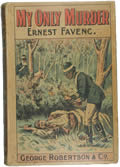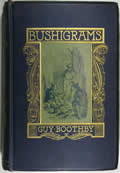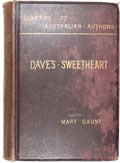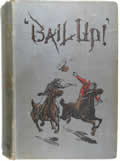Colonial Australian Popular Fiction is an online bibliography and digital archive that gathers together for the first time materials that have previously been difficult to access. Part of a larger ARC-funded project producing a complete critical history of Australian popular or genre fiction from the early to late colonial period, it is designed to operate as a major reading, research and teaching resource. It makes available a wide selection of popular colonial publications, many of which are now rare and out of print. Texts are imaged and presented in their original format, highlighting the physical and visual aspects of book production in what was a dynamic and competitive colonial publishing scene. Immediately striking is the compelling and often sensational cover-art that was sometimes commissioned by publishers like George Robertson and - perhaps most notably - the NSW Bookstall. The inexpensive, colourful paperbacks produced for the long running Bookstall series are easily recognisable for their images of the heroes and villains and exotic locations that were typical of their subject matter; from the intrepid detective of Randolph Bedford's Billy Pagan: Mining Engineer (1921) to the tropical-suited adventurer William Trotter from Jack McLaren's Red Mountain (1919). Artists and illustrators were often writers as well; Norman Lindsay, who designed numerous Bookstall covers, was also a writer of popular fiction, while Hume Nisbet, a Scottish-born writer whose novels are often set in and around Australia and the Pacific, was a prolific book-illustrator.
Many nineteenth-century Australian authors had large audiences overseas as well as locally and were often themselves great travellers, even explorers. Nisbet went to Papua New Guinea, Guy Boothby went from Adelaide to Darwin, and Ernest Favenc traversed the interior and sailed around far north Queensland. Encounters with diverse colonial landscapes change complexion across the different popular genres writers were working in: the bush, the desert and the tropics are often rendered as somehow infernal and hallucinatory in Gothic tales and novels by writers like Guy Boothby, Ernest Favenc, 'Tasma' (Jessie Couvreur), Marcus Clarke and Mary Gaunt. The physical harshness of an inhospitable colonial landscape provides the setting for narratives of exploration and outback adventure in works like James Francis Hogan's The Lost Explorer: An Australian Story (1890) and William Sylvester Walker's Native Born: A Novel (1900), while tropical far-northern Australia and the South Pacific feature in exotic sea-faring adventures by Louis Becke and others. Conditions of drought and hardship on the land tend to drive the comic-tragedy of colonial melodrama, in works like Steele Rudd's (Arthur Hoey Davis) On Our Selection series and Henry Fletcher's The Waybacks: In Town and at Home (1902) and The Waybacks Again, or Love at Dingo Flat (1910). Colonial crime fiction moves through diverse landscapes in stories of the goldfields by writers like James Skip Borlase and Mary Fortune, bushranging tales like E W Hornung's Stingaree (1926) collection, stories of convicts and penal colonies by 'Price Warung' (William Astley) and others and, of course, metropolitan crime novels like Fergus Hume's international best-seller The Mystery of a Hansom Cab (1886). Colonial romance, likewise, is striking in its diversity of contexts and interests, often abandoning the drawing-room for the outback and the bush, as found in Rosa Praed's Fugitive Anne: A Romance of the Unexplored Bush (1902) and many novels by Marie Bjelke-Petersen. Futuristic and imagined Australian landscapes are visited also, in works of science fiction and fantasy like Edward Maitland's The Battle of Mordialloc, or, How We Lost Australia (1888) and George Firth Scott's The Last Lemurian: A Westralian Romance (1896).
Many of the works collected here have been largely forgotten today, though they were often bestsellers at the time of publication, sometimes running into several editions. Local publishers also reprinted from earlier or overseas editions, keeping some colonial fiction alive for years after its original publication. For example, John Lang's collection of crime stories, Botany Bay, was first published in 1859 and reprinted thirty years later by both the NSW Bookstall and Melbourne's E W Cole. The thriving popular literary industry that developed throughout the nineteenth and early twentieth centuries in Australia was central to colonial culture. It remains significant today as a field of writing that expressed colonial sensibilities and performed colonial predicaments in often self-conscious and ambivalent ways, opening the way for more complex contemporary understandings of the tasks of settlement and nation building.
This online archive is part of a larger project funded by the Australian Research Council, based in the English program at The University of Melbourne and developed in association with the university’s eScholarship Research Centre. The archive is now being extended and developed as part of an ongoing collaboration with University Digitisation Service and the University Library.
Ken Gelder, Rachael Weaver and Ailie Smith



